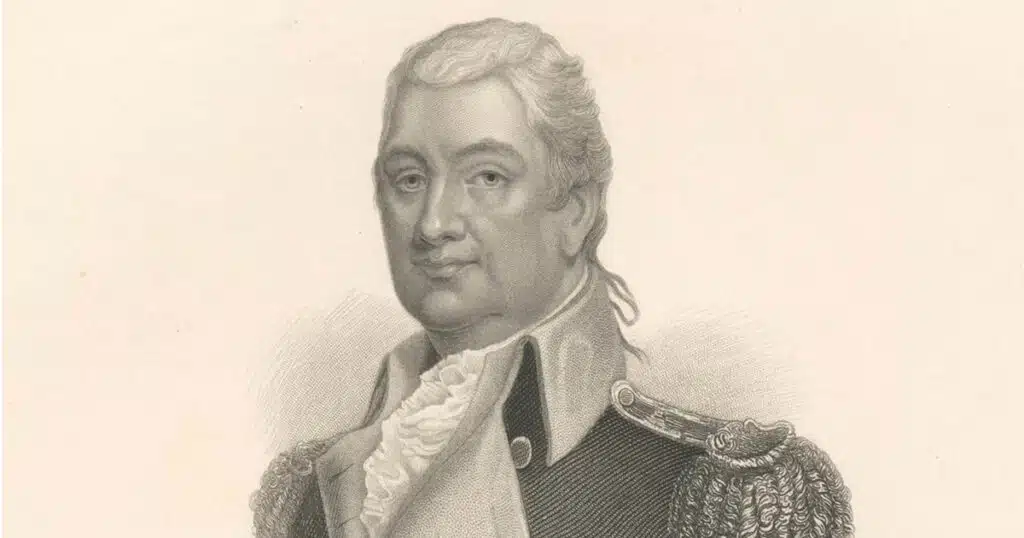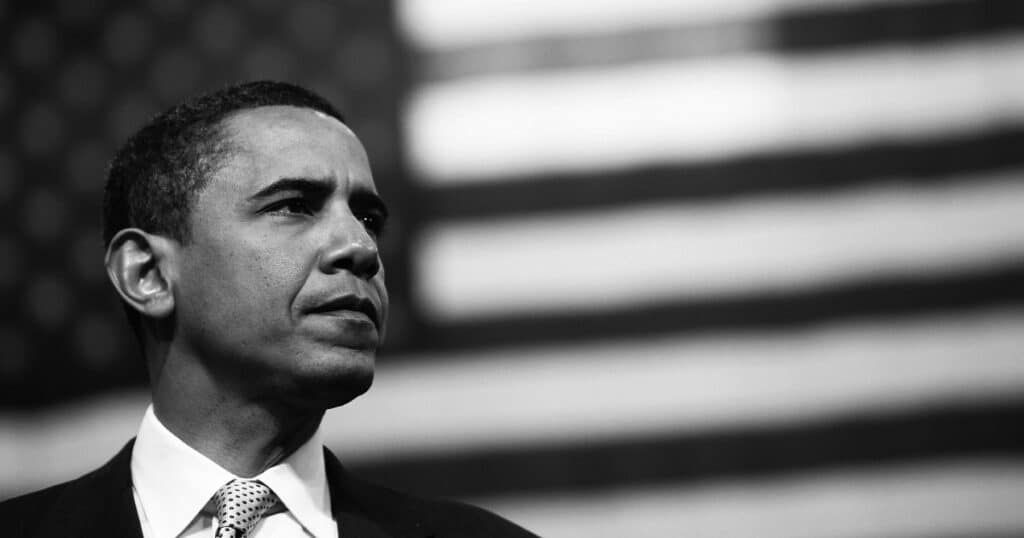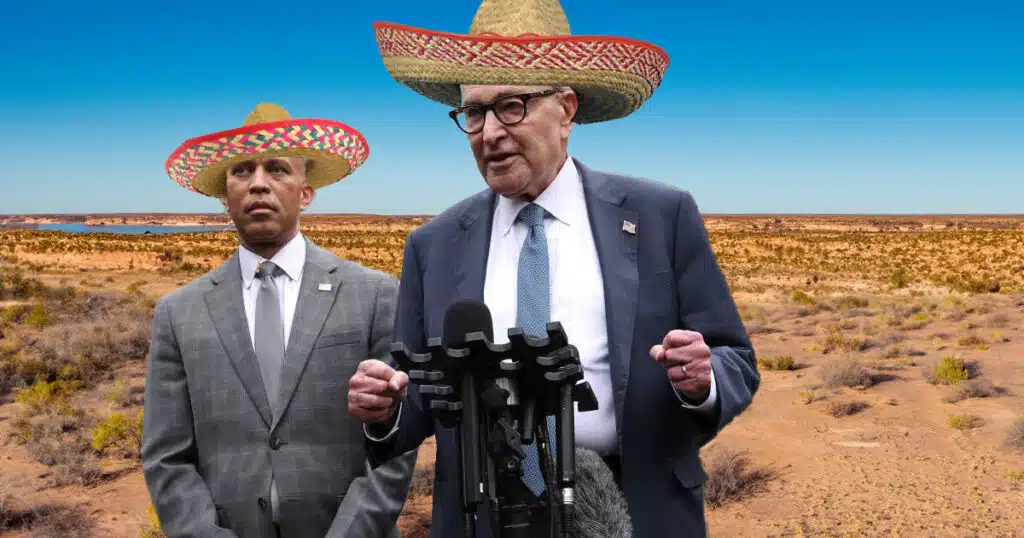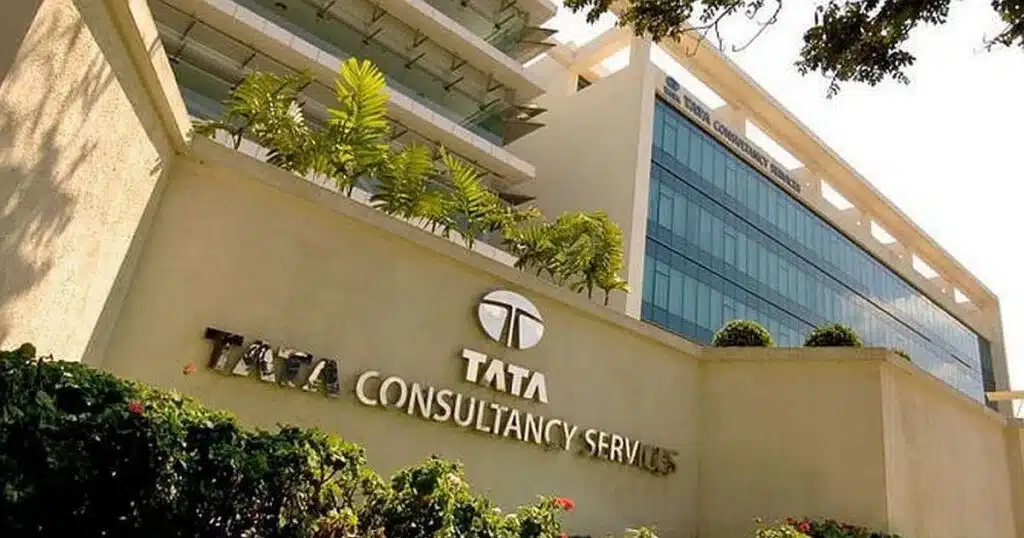
Can America’s National Resilience Long Endure?
In the autumn of 1775, as George Washington’s volunteers laid siege to Boston, a local bookshop owner-turned-citizen-soldier named Henry Knox proposed a daring plan: Take a small force to the French-owned Fort Ticonderoga, steal its 59 cannons, position them on the Dorchester Heights, and drive the 11,000 British troops from the city.
Floating 120,000 pounds of guns, artillery, and ammunition down Lake George and then 300 miles overland through roadless wilderness in wintertime was as audacious an idea as challenging the divine rights of kings and forming the world’s first elective democracy.
Both succeeded.
Gen. Washington approved Knox’s gambit, which gave the Continental Army its first significant military victory. And as we begin the year-long commemoration of America’s 250th anniversary, this early example of Americans’ can-do spirit comes at a fraught inflection point. Here’s why: Henry Knox was only 25 years old when he embarked confidently on his improbable mission.
“We want great men, who when fortune frowns will not be discouraged,” Knox wrote to his wife during the Revolutionary War. “God will I trust in time give us these men.”
By and large his trust proved to be well-placed. In the ensuing two and a half centuries – through civil war, women’s suffrage, two world wars, the Great Depression, the labor movement, the civil rights movement, environmental reconsideration, and periodic reassessments of what is owed those harmed or left behind by the nation’s unrelenting expansion and growth – America found the will, and the leaders, demanded by those many tribulations.
But will this national resilience endure? The evidence is mixed.
Americans in their 20s today have vastly less confidence in their ability to forge a better future – or even faith in the American project itself. This pessimism has been documented in numerous studies, including a new poll by RealClear Opinion Research.
In a national survey of 1,000 U.S. voters only a bare majority of respondents (52%) think America’s best days are ahead, while 48% think the country’s best days are behind us.
Among Gen Z and younger millennials, the picture is particularly bleak: With this group America is essentially underwater: 57% voters under 40 say America’s best days are in the rear-view mirror.
The nation’s youngest voting cohort – those aged 18-29 – is far less enamored of their country than their elders, or any generation previously measured: Only 52% of voters under the age of 30 are “proud” to be Americans, 19 percentage points lower than the next-lowest group.
Similar findings have shown up in a 2024 Statista survey, in the biannual Harvard Youth Poll done last spring, and in a Gallup polling done earlier this summer. As the Gallup data shows, the generational malaise is getting worse – and at a disquieting rate.
The implicit anti-Americanism that hummed like a low-level electrical current through some of the 2020 Black Lives Matter protests and many of the pro-Palestinian demonstrations of the last two years has focused attention on what is being taught in America’s institutions of higher learning as well as in our elementary and secondary schools. The problematic developments range from teaching junk Middle East history through the prism of “colonialism” to examples of overt hostility toward Jews by our nation’s teachers unions.
And yet, whether they are conservative or liberal, the pollsters closest to college students tend to hold sympathetic views toward Gen Z.
“Younger Americans are forming their views of the nation through lived experiences marked by uncertainty and polarization,” said Emerson College pollster Spencer Kimball, who directed the RCP survey, “while older generations, who have witnessed periods of both turmoil and progress, tend to see America’s best days as still ahead.”
John Della Volpe, the longtime Institute of Politics pollster who oversees the Harvard Youth Poll, amplified on this point.
“This is a generation that is stretched incredibly thin – financially, emotionally, politically,” added Della Volpe, who also helped found RealClear Opinion Research. Speaking in June, when his latest survey of college-age Americans was released, Della Volpe added, “They’ve lost trust in our leaders. They’ve lost trust in institutions. I don’t think there’s apathy there, but I do think that unless we connect with them and listen – and listen soon – it’s going to be much harder to win them back.”
A House Divided
It comes as no surprise that in our highly polarized current political environment the latest RealClear Opinion Research survey also documented stark partisan divisions on questions pertaining to Americans’ vision of themselves, their safety, and their future.
A majority (74%) of Republicans think America’s best days are ahead of it, while 56% of independents and 64% of Democrats think America’s best days are behind it. Likewise, fully 96% of Republicans are proud to be an American, compared to 63% of independents and only 53% of Democrats.
Respondents were also asked whether they consider gang violence to be (a) “a very serious” problem; (b) “a somewhat serious” problem; or (c) “not too serious” a problem. Among Democrats, only 20.3% deemed gang violence a “serious” problem, with 44.1% answering “somewhat,” and fully 50.4% answering “not too serious.”
Republicans have much different perceptions, with 42.9% labeling gang violence as “very serious,” 26.7% “somewhat serious,” and only 20.6% saying “not too serious.” Independent voters are significantly closer in their answers to Republicans.
The context for these responses is instructive. On the one hand, it is Democrats who predominate in urban areas and are therefore much more likely to have first-hand knowledge of gang activity (and to be victims of gang-related crime), so their answers are counterintuitive. What helps explain it is that President Trump has used gang violence as a pretext to send National Guard troops into cities controlled by Democrats, a move resisted almost universally by Democratic Party officials and opposed by majorities of Democratic rank-and-file voters.
Nonetheless, a huge majority of voters (84%) think the government should be doing more to prevent all acts of violence, though there is little consensus about what preventive measures would look like. When presented with a list of issues and asked which factors contribute most to violence in America, voters were all over the map:
- 20% easy access to guns
- 19% political polarization
- 17% mental health issues
- 14% social media
- 13% poverty and economic inequality
- 5% weak law enforcement
- 4% violent entertainment/media
- 3% lack of education opportunities
Political Violence in the United States
Huge majorities of Americans – Republicans, Democrats, and independents – say political violence is a “very” or “somewhat” serious problem. In the wake of Charlie Kirk’s assassination, however, significantly more Republicans (37.5%) than Democrats (29.5%) believe political violence is a “very serious” challenge.
In an implied rebuke to both major political parties – and the media – fully 88% of voters believe the recent tone of America’s political discourse encourages this kind of violence. Almost four in 10 voters say the GOP rhetoric tends to be more violent, while nearly as many (36%) think the Democratic Party rhetoric is more violent – with 21% answering that both are “equally violent.”
Voters were also asked whether they are more concerned about homegrown extremists or foreign terrorists. By a 3-1 margin, they said they are more fearful of the homegrown variety.
Perhaps that’s because we are talking to one another in our ideological silos: When discussing the news with their friends, 49% of voters find that their friends’ views “sometimes” align with their own political views; 39% are “often” in line with their friends’ views. Only 12% of respondents said their typical political conversations are with people who “rarely” share their views.
This is indicative of the kind of self-sorting that exists online, but also increasingly in the workplace, schools, houses of worship, and neighborhoods. This phenomenon was first documented in 2008 by Texas journalist Bill Bishop. It has been supercharged by Silicon Valley algorithms and foreign tech entities like TikTok. Although some critics say the problem of The Big Sort is overstated, in this RealClear Opinion Research poll, fully 57% of voters say they have intentionally avoided talking with friends and family with differing political views.
“This isn’t a new phenomenon,” notes Spencer Kimball. “Voters often engage in selective exposure to engage with people and content that aligns with their views. It is interesting that the rate of those who avoid talking to friends or family with opposing views increases with age, from 47% of voters under 30 to 65% of voters over 60 who avoid such conversation.”
On the other hand, the survey also found that the willingness to justify political violence rises in direct proportion to the hours one spends on social media – and gets higher, the younger the voter. Although just 7% of respondents said yes when asked if political violence is “ever justified,” among voters under 40 this figure was 13% – double that of any other group.
Jason Steinhauer, a bestselling author and public historian, has written a thoughtful essay about the intellectual underpinnings of political violence – particularly (but not solely) among the disciples of the radical left. Yet Steinhauer also expresses solicitude for young Americans whose alienation has made them susceptible to such rhetoric.
“Young Americans have come of age in an era of endless wars, economic uncertainty, job insecurity, staggering inflation, political violence, environmental degradation and unending social media feeds full of disinformation and propaganda,” he told RealClearPolitics.
“It should not be surprising, then, to learn that they do not feel sanguine about the future – theirs or their country’s,” Steinhauer added. “Those of us in positions of political and societal leadership have an obligation to demonstrate to all Americans – but especially young people – that our institutions care about their concerns, can devise concrete solutions to their problems, and see them as equal partners in co-creating a better future.”
Much is riding on it. In 1776, Henry Knox put it this way: “The eyes of all America are upon us; the matters which we are to act are of infinitely high import, as we play our part posterity will bless or curse us.”
This article was originally published by RealClearPolitics and made available via RealClearWire.



